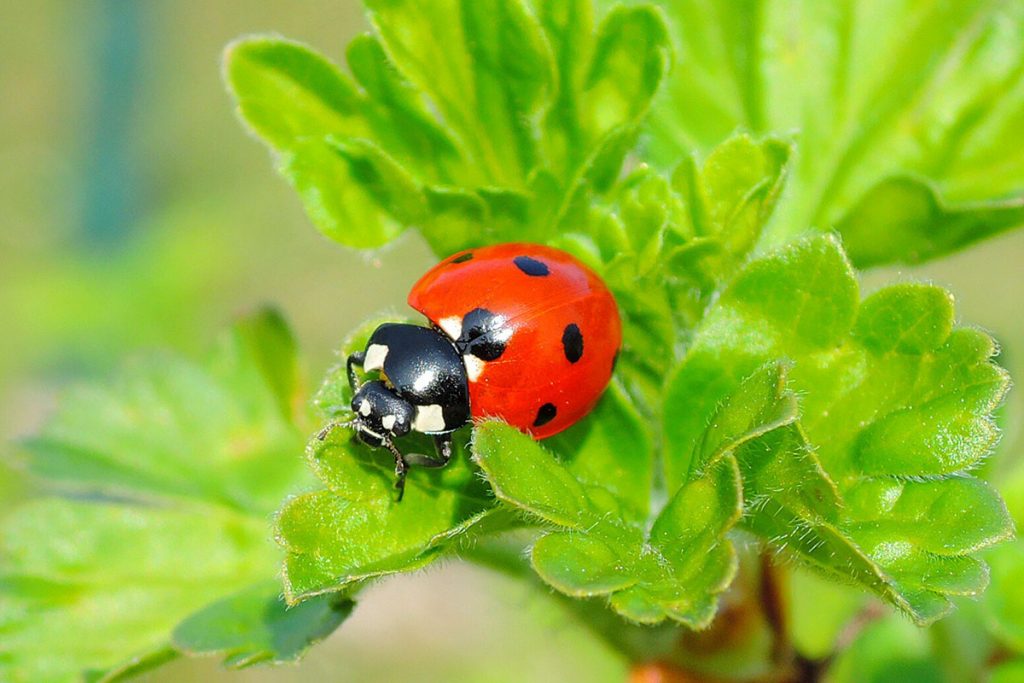As a child, I enjoyed having Ladybugs crawl on my hand. I’d try to count the black spots. Women in the Victorian era believed that if a ladybug landed on them, they would get something new. If it landed on their head, they thought they would receive a new hat. On the hand, it would be new gloves. Today some believe that if a Ladybug lands on you, your wishes will come true.
In North America we call them Ladybugs. In Britain and other English-speaking countries, they are called Ladybirds. Ladybugs aren’t really even bugs. Bugs belong to the order Hemiptera. Ladybugs are part of Coleoptera, the Beetle order. These little beetles have an insatiable appetite. That’s a good thing for those of you who garden because they eat the insects that invade your plants like aphids, whiteflies and other destructive bugs.
Most of us are probably used to seeing the orange Ladybug with black spots but they come in a wide range of other colors as well—gray, tan, metallic blue. The number of spots can vary, too, and some have no spots at all.
Even though they are small, they still have a defense mechanism to protect themselves from predators. When the insects are disturbed, they emit an odorous, noxious yellow fluid that seeps out of their joints.
Did you know, though, that there are “bad” Ladybugs? Asian Lady Beetles were first discovered in the United States in 1988 and are known as the Ladybugs’ evil twin. They, too, devour aphids so in that regard, they are beneficial. Their hefty appetites can extend to non-pest insects as well like monarch butterfly eggs and larvae and that’s not good.
Asian Lady Beetles can bite. The bites are not poisonous or extremely painful but in some cases can cause “pink-eye.” In the fall or winter, if you notice large numbers of what you believe are ladybugs congregating around your home, they’re probably Asian Lady Beetles. When it begins to get cold, they will attempt to enter your home and can stain walls, furniture and fabrics with the stinky yellow fluid they secrete.
Asian Lady Beetles can be harmful to dogs. When a dog in Kansas started sleeping all the time, refused to eat and was foaming at the mouth, the veterinarian discovered over 30 Asian Lady Beetles had attached themselves to the roof of the mouth.
So how do you tell the difference between the good Ladybug and the evil twin, the Asian Lady Beetle? Look at the markings on their head. From above, Asian lady beetles have a white “M”-shaped spot where their head meets the body.
As part of our mission, we strive to educate you about environmental issues that may affect your lives.
The Ladybug acts as a natural pesticide in nature and they can be easily purchased online. Utilizing this unique feature of the Ladybug can discourage the use of dangerous pesticides that are harmful to all living things. Check out our website at www.twrcwildlifecenter.org for more helpful information.
